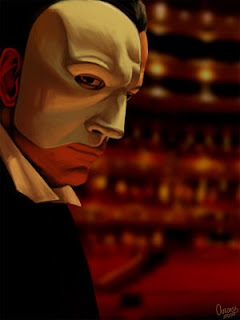“When you meet me,
you’re going to notice that I walk with a limp.” I was talking to a match I had been paired
with through eHarmony for a while and it was time to meet for a date. “The reason I walk the way I do is because I
have very mild cerebral palsy. I don’t
want you to be surprised; I think you should meet me before you make any
judgments.” The phone was silent for a
moment. I held my breath, waiting for
his response.
“That’s okay
Jenny. I’m not perfect either. I’ve had 13 facial reconstructive surgeries
to repair the muscles in my face that never developed. I’m also missing an ear.” Now it was my turn to be silent.
Is there beauty to be revealed within physical deformity, or
is it all gross anatomy? Our culture
seems to be both fascinated and repulsed by this subject. The
World Press Photo of the Year in 2010 was of an Afghan woman “whose nose and
ears were cut off by her husband.”
Meanwhile, Facebook
banned the posting of pictures of a baby who was born with Anencephaly
which was the cause of major birth defects.
If beauty is indeed found within in the eye of the beholder,
what happens when beholders don’t like what they see? Does the beauty within the beholden cease to
exist, or does it remain, shining through, independent of perception?
 |
| The Phantom of the Opera |
Mephibosheth,
a character in the Old Testament, seemed to struggle with the problem of
perception. He was dropped as a child resulting
in a crippling injury. When called to
appear before the King of Israel, he questioned the invitation by asking, “What is your servant, that you should notice a dead dog like me?” (2
Sam. 9:8).
In a recent book I read, The Gift of Pain, Dr. Paul Brand tells
of his many interactions working with patients who had leprosy, a disease which
often results in severe facial deformity.
One patient, John, suffered from facial paralysis making it virtually
impossible to smile. One of his eyes was
partially sewn shut in an effort protect his deteriorating sight. Dr. Brand encouraged him to go to church, to
interact with other people. In response
to this invitation, he yelled, “No one likes an ugly face!”
Some scientists would argue that this
gentleman is right. Beauty, they say has
to do with symmetry. Somehow, we’re
“hardwired” to like eyes that are a certain width apart and heads that are of a
certain length. Watch the video
featuring Beyoncé Knowles here: http://www.youtube.com/watch?v=o7z25sN1rZ4
I won’t argue that Beyoncé Knowles isn’t
beautiful. (If for nothing else, she has made it vogue to be a single
lady!) But this video raises a bigger
question, aren’t all people beautiful just because they’re human? Are there really times when it is appropriate
to judge one person as beautiful and another as ugly?
When I look at People Magazine’s list of “Most
Beautiful People,” or their annual judgment of who is the
“Sexiest Man Alive,” I frequently see two things: flawless perfection and hidden pain.
But, when I consider a person who lives with deformity, I think the reverse is
often true. Their pain is usually very
visible, while their beauty is hidden. I
believe it is here, upon these lives, that God creates a canvas, weaving His
most stunning tapestries of redemption; revealing beauty in the face of pain.
After all, Mephibosheth
ended up with a permanent seat at the king’s dining table, John was embraced by
a man he met at church, who offered him employment in his factory. John went on to win a national award for the
work he produced. As for my date, his
solo ear had given him the gift of perfect pitch!
Questions to consider:
·
Do you
believe all humans are beautiful independent of their physical appearance?
·
Do you
struggle to see the beauty that can be revealed in the face of deformity?
·
Upon
whose life have you seen God’s greatest works of redemption?
Resources:
Much of this content
was based upon her.meneutics, Christianity Today’s blog for women: http://blog.christianitytoday.com/women/2012/05/facebook_grayson_walker_and_a_1.html#more
The book I mentioned
is The Gift of Pain: Why We Hurt and What We
Can Do About It by Dr. Paul
Brand and Philip Yancey. (Zondervan,
1997).
Finally, Judy Hougen has written some profound words on
topic of beauty that can be found on her blog, Coracle Journeys. Here are two great posts: The
Hope of Wounded Beauty and A
Little More on Broken Beauty.
No comments:
Post a Comment